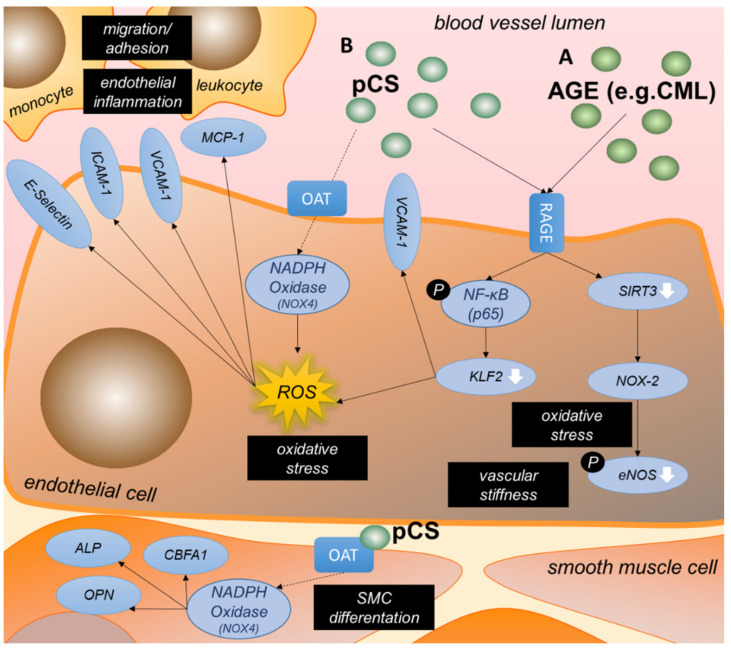Figure 5.
Mechanisms underlying p-cresyl sulfate or AGE-induced endothelial dysfunction. By activating RAGE, AGEs mediate oxidative stress and reduce vasoreactivity by decreasing eNOS activation in endothelial cells. Further, AGEs as well as p-cresyl sulfate increase ROS generation via KLF2. ROS increase endothelial inflammation by enhancing surface expression of chemokines (e.g., MCP-1) and surface adhesion proteins (e.g., VCAM-1, ICAM-1, E-Selectin), triggering leukocyte recruitment and binding (A). Cellular uptake of p-cresyl sulfate by endothelial cells as well as SMCs takes place via organic anion transporters. This results in the activation of NADPH oxidase NOX-4, leading to the differentiation of SMCs and ROS generation in endothelial cells (B). ALP = alkaline phosphatase; CBFA = core-binding factor alpha; eNOS = endothelial nitric oxide synthase; ICAM = intracellular adhesion molecule; KLF = krüppel-like factor; MCP = monocyte chemoattractant protein; NADPH = nicotinamide adenine dinucleotide phosphate; NF-κB = nuclear factor kappa B; OAT = organic anion transporters; OPN = osteopontin; ROS = reactive oxygen species; SIRT = sirtuin; NOX = NADPH oxidase; SMC = smooth muscle cell; VCAM = vascular cell adhesion molecule.

